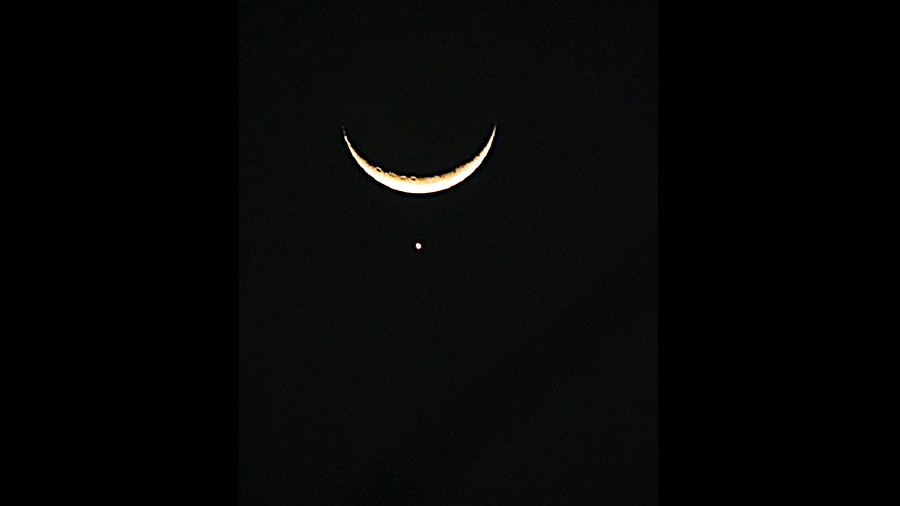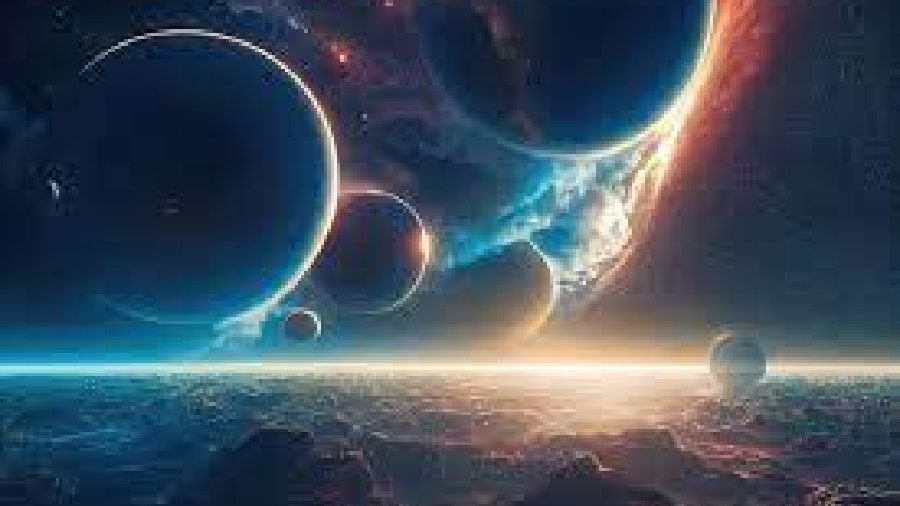Stargazers and enthusiasts globally are eagerly waiting for March 28 for a rare cosmic spectacle.
In the last week of March 2023, five planets — Mercury, Jupiter, Venus, Uranus and Mars — will be aligned in an arc form along with the moon on the sky after sunset on March 28.
Whether people can effectively see this alignment depends on their geographical position and ambient light condition since it will be only after the sunset that these planets will become visible to human eye near the western horizon.
The scientific understanding of the formation of our solar system tells us that it formed from a cloud of gas and dust around 460 crore years ago. Initially, the cloud took the shape of a disc because of gravity and spin and ultimately when the sun was born in the middle, planets were slowly formed from the disk materials and started revolving the Sun.
As a result, almost all planets, including Earth, circle the Sun in a plane around it. As Earth also formed as a part of this disk, from the perspective of Earth, the planets and the Sun seem to be moving in almost a line. This apparent almost linear path of the progression in the shape of an arc of the planets and the Sun, as viewed from Earth, is known as the Ecliptic. Though the planets goes round the Sun in different orbits and orbital period, at times, they appear on the sky bunched together in an alignment and more than one planet appears on the night sky of Earth in a linear arrangement.
Every once in a while, something very special happens — multiple planets come together in the same part of the sky for a planetary alignment. Planets are among the brightest objects in our night sky, reflecting the light of the Sun. There are technically six planets visible from Earth without a telescope — Mercury, Venus, Mars, Saturn, Jupiter, and Uranus.
Uranus, however, is only visible under perfect viewing conditions. Being very far from Earth, it becomes impossible to observe it with naked eye from urban and suburban areas. A powerful binocular or small telescope will allow interested people to observe Uranus.
Though technically, five planets are getting aligned on and a few days around March 28, two of them, Mercury and Jupiter, will be difficult to observe as they will be close to the setting Sun and will go down the western horizon soon before it becomes completely dark.
On March 28, the Sun will set on Kolkata sky around 5.50pm to be followed by Jupiter and Mercury around 6.35pm and 6.37pm, respectively. Venus will be the brightest in the western sky after the sun sets and will go beyond the western horizon around 8.32pm. Just above Venus, to a little northward, will be Uranus, which will set around 8.42pm in Kolkata.
One will need a binocular or a small telescope to observe it clearly.
In the evening sky, Venus and the 45 per cent illuminated moon will dazzle brightly. Close by will be Uranus. Venus will set in the western horizon around 8.32pm, while Uranus will set around 8.42pm. In Kolkata, Mars and the Moon, close to one another, will be present for some more time and will ultimately set at 12.08am and 12.22am, respectively.
So, the sky remaining clear, sky lovers can take up their position after the sunset, with a clear view of the western horizon and enjoy the enchanting march of the planets and the Moon.
In a similar occurrence on June 24, 2022, five naked-eye planets had marched across the sky, starting an hour before dawn.
There is also a list of other smaller but interesting planetary alignments waiting for them this year to happen on April 11 and 24, May 29, June 17, July 26 and August 24.
The next major planetary arrangement in the sky will happen on September 8, 2024, in which five planets will stage another spectacular event in the sky along with a crescent moon.
Author is a former director of MP Birla Planetarium
VENUS VIEW
A bright spot below a perfect crescent moon had Kolkatans enthralled on Friday evening. “The bright spot is a tiny part of Venus visible from Earth. Friday saw what in astronomical parlance is known as Lunar Occultation of Venus, which was visible from most parts of India. It happens because of the moon orbiting between Earth and Venus. When they line up in a straight line, the moon is in front of Venus and blocks it from our sight,” said Debiprosad Duari, former director of MP Birla Planetarium.
“From Kolkata, Venus went behind the Moon around 4.44pm and reappeared around 6.08pm. So, for city skywatchers, Venus was missing for an hour and 25 minutes. This duration was different for different places. It was as if Venus was eclipsed by the moon. In Leh, the duration of Venus disappearing behind the moon was 41 minutes, whereas in Mumbai, it was almost an hour and 40 minutes,” he said. In Kolkata, this image could be seen till around 8.30pm.

